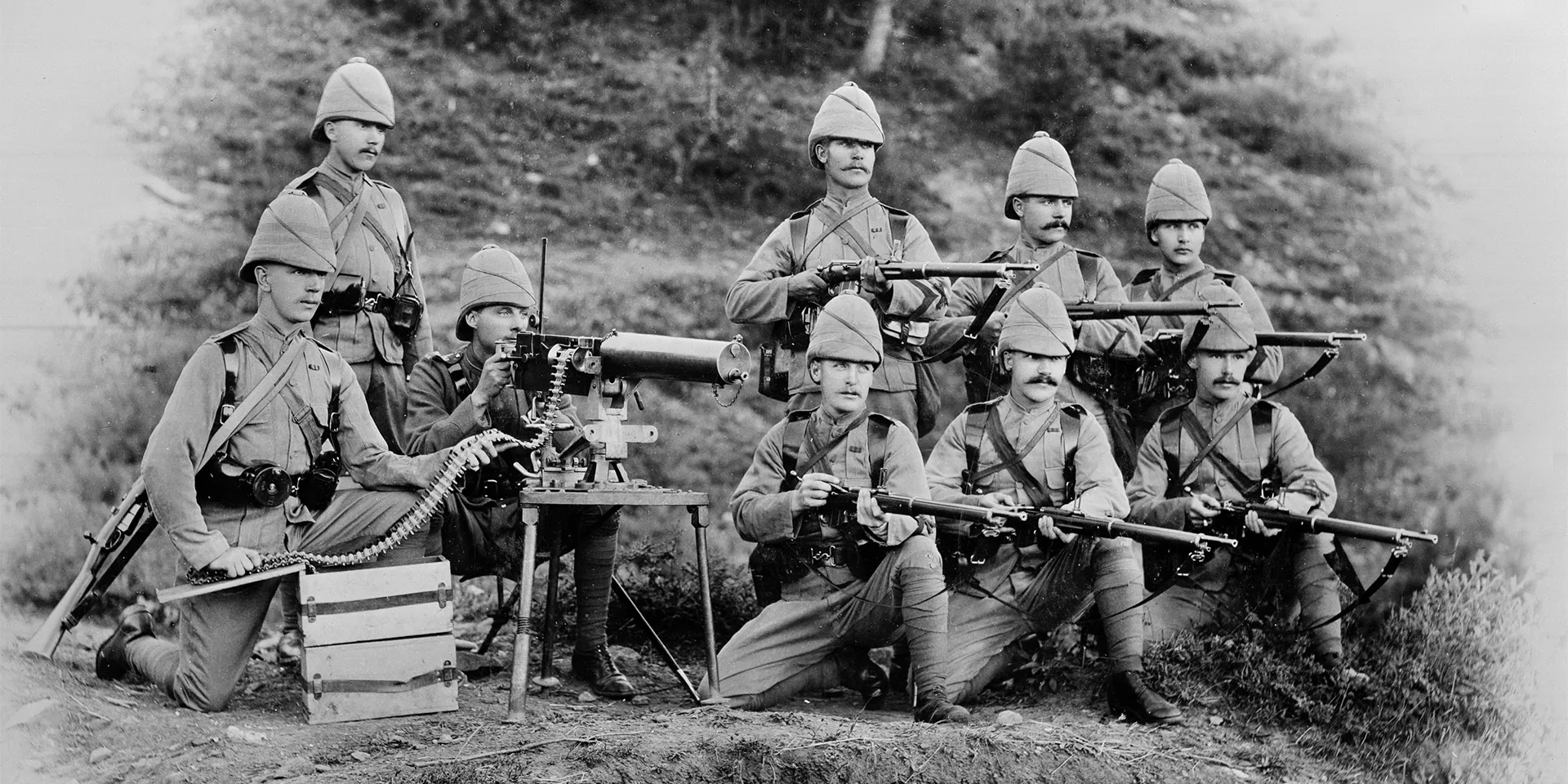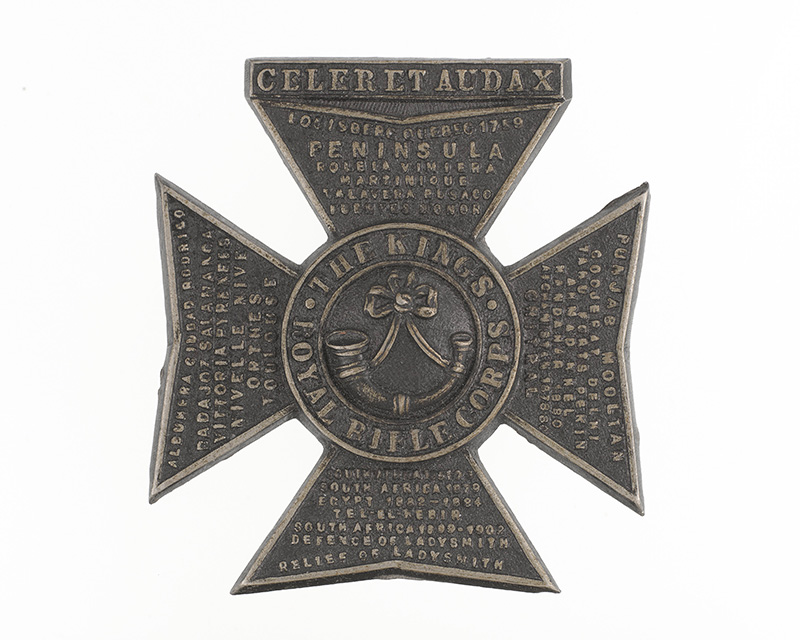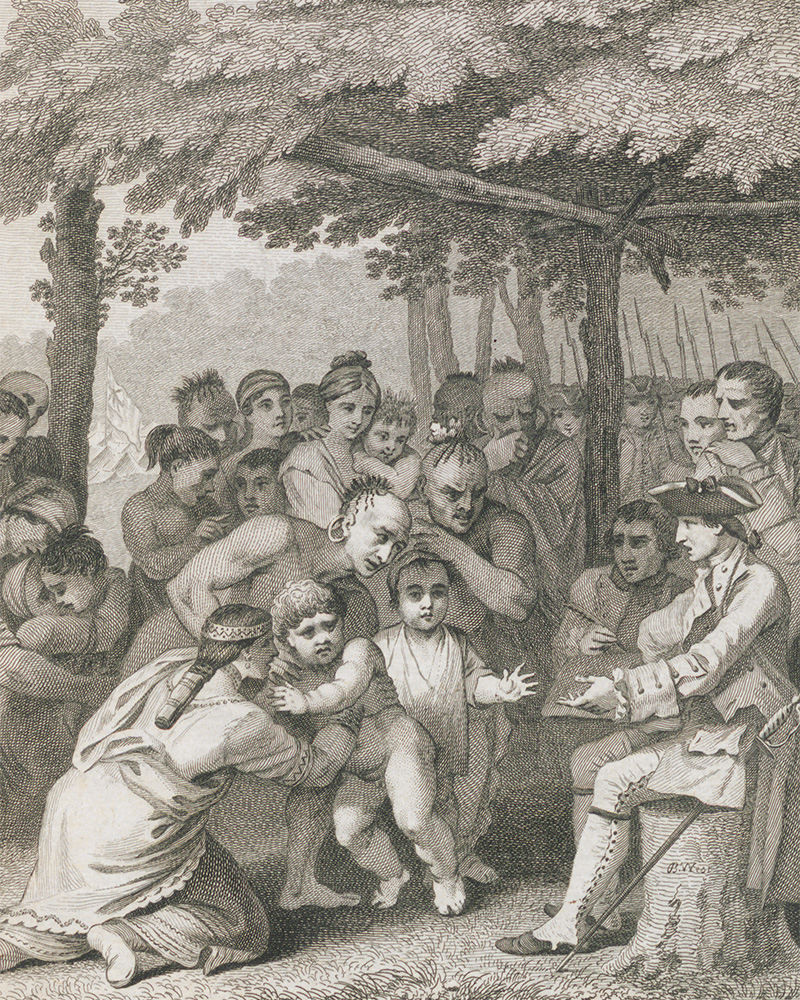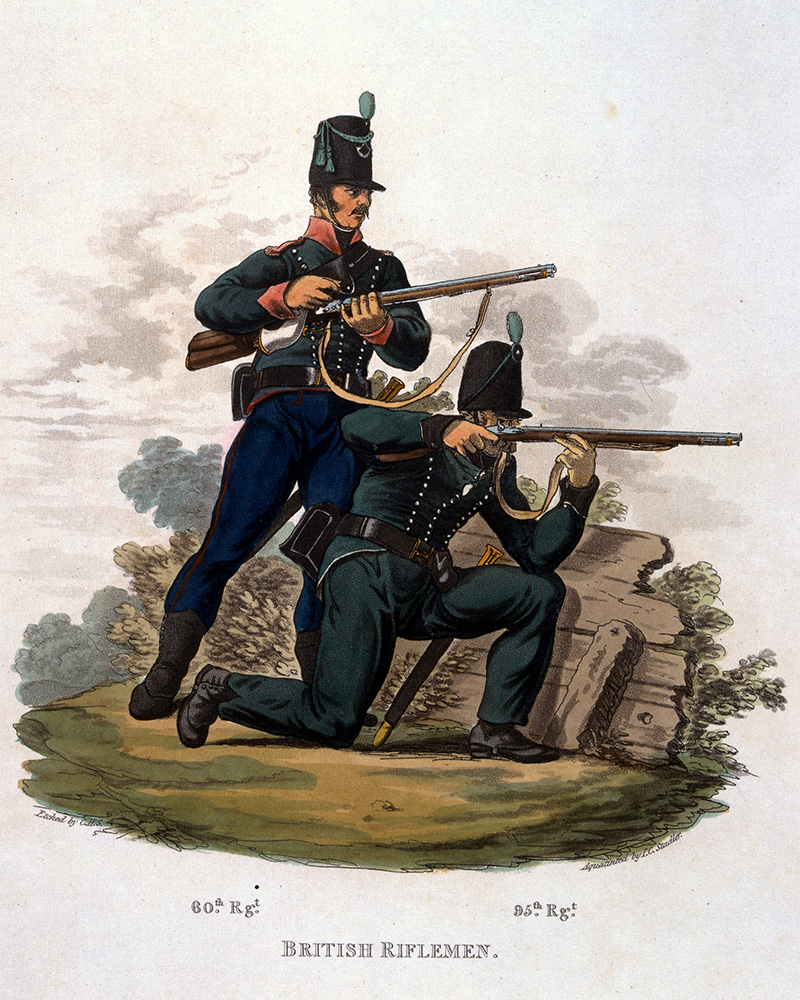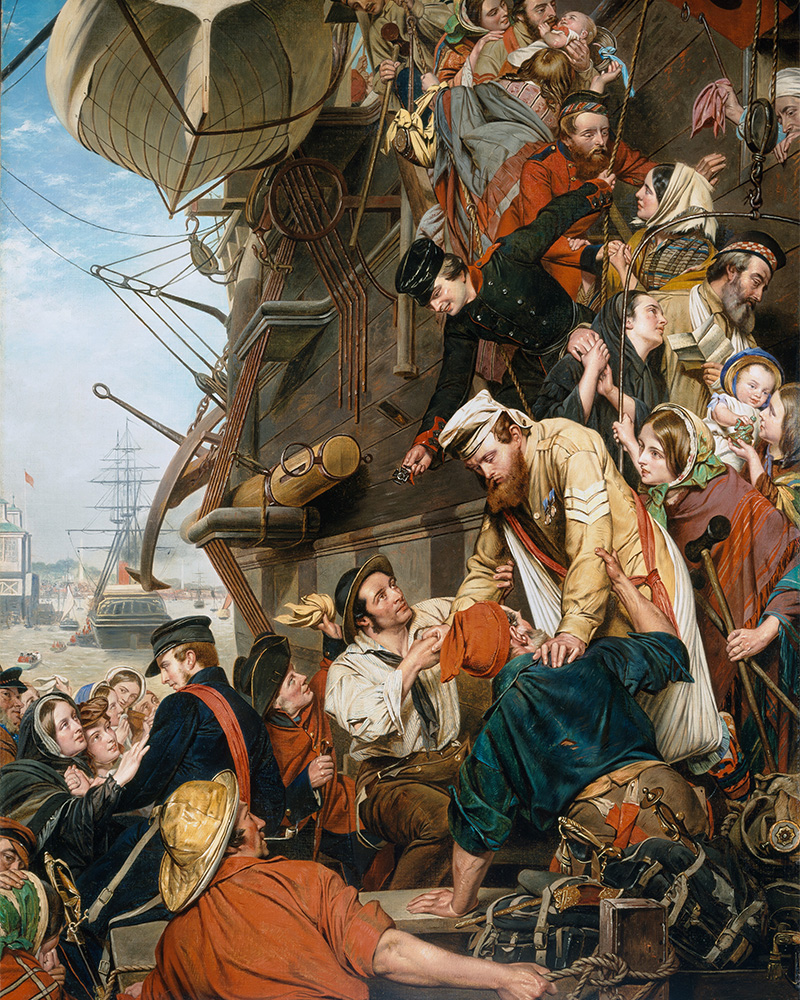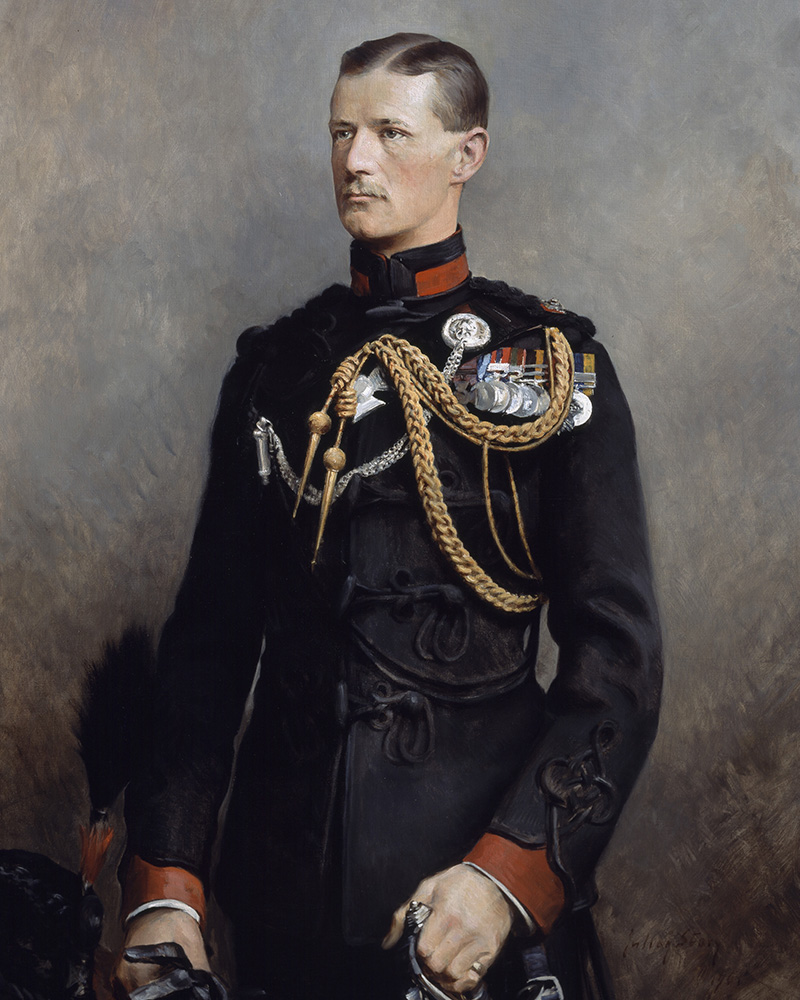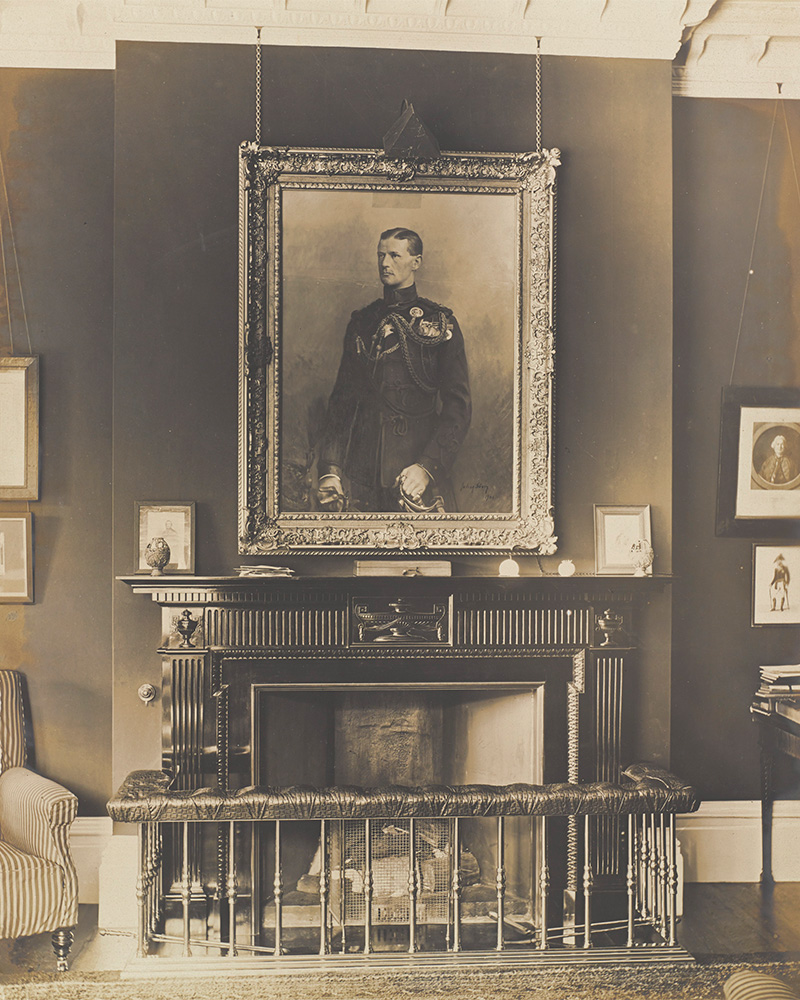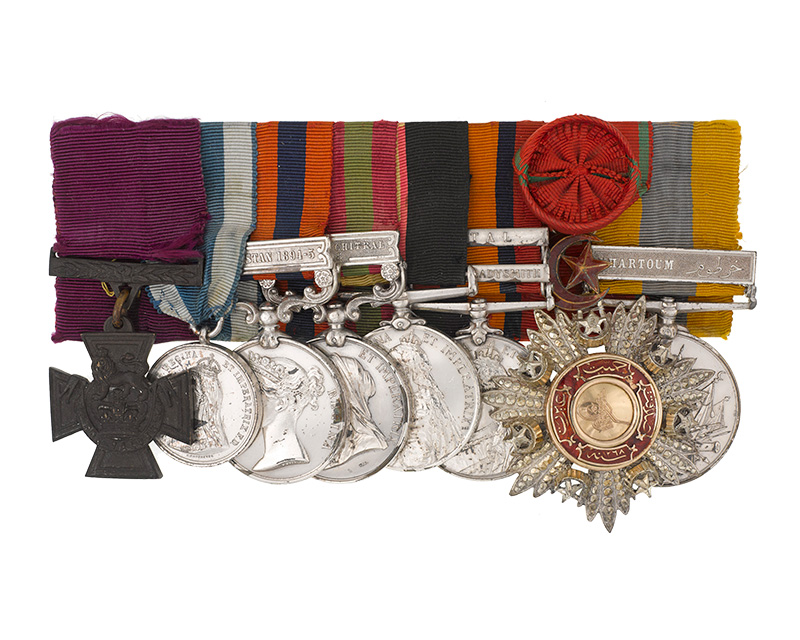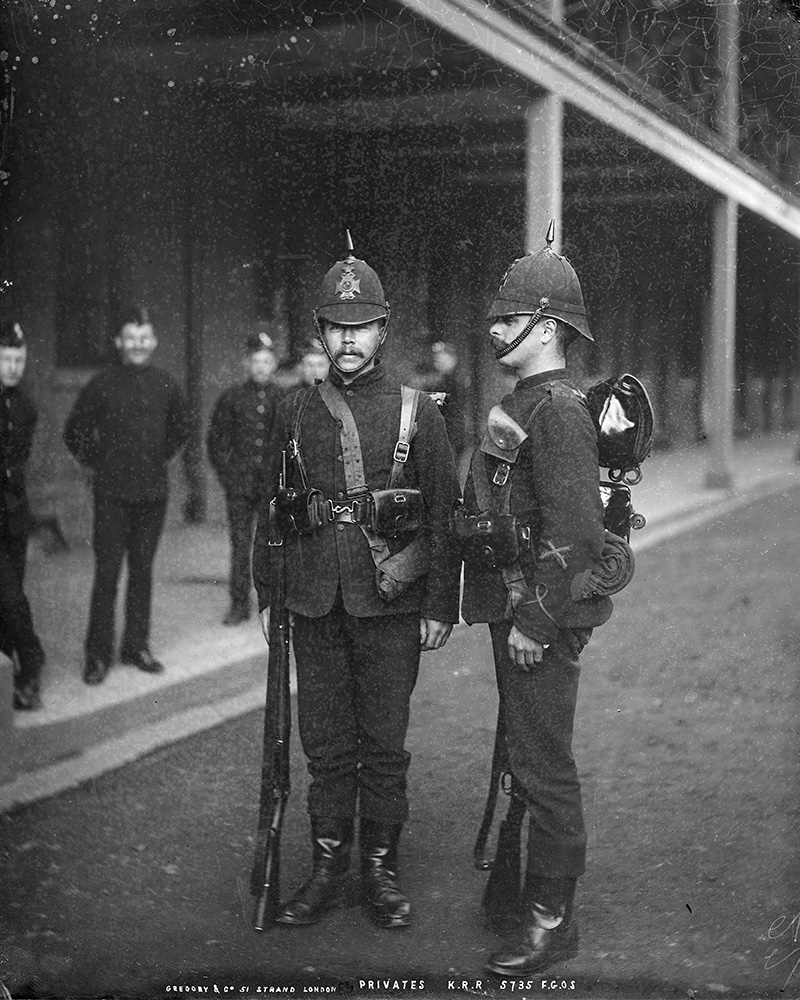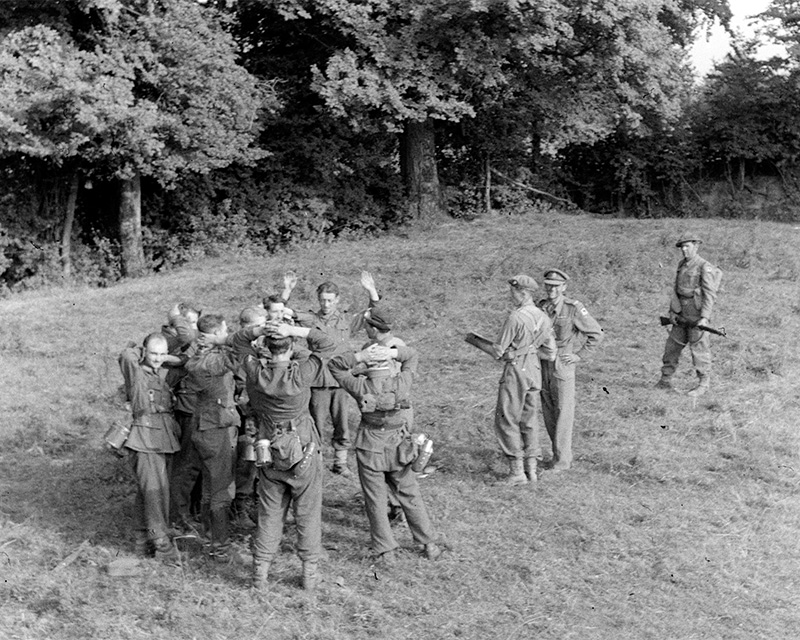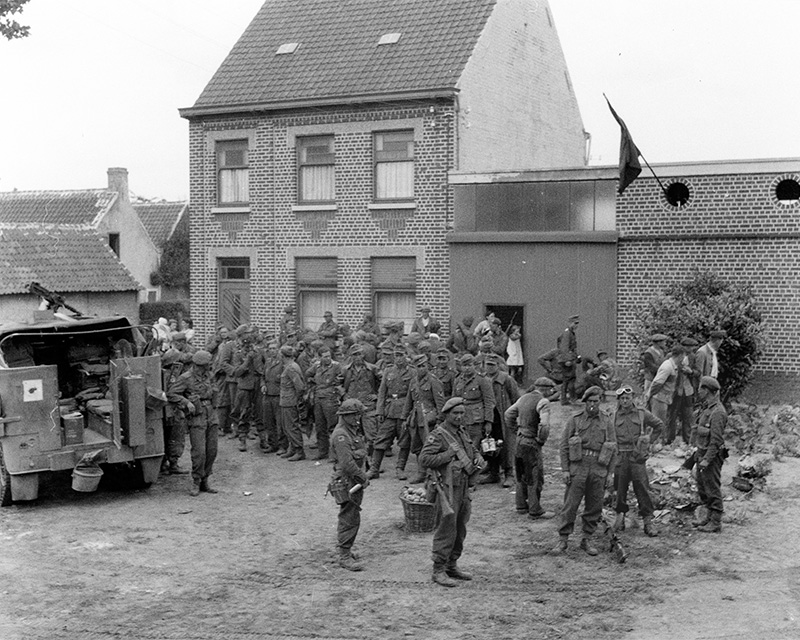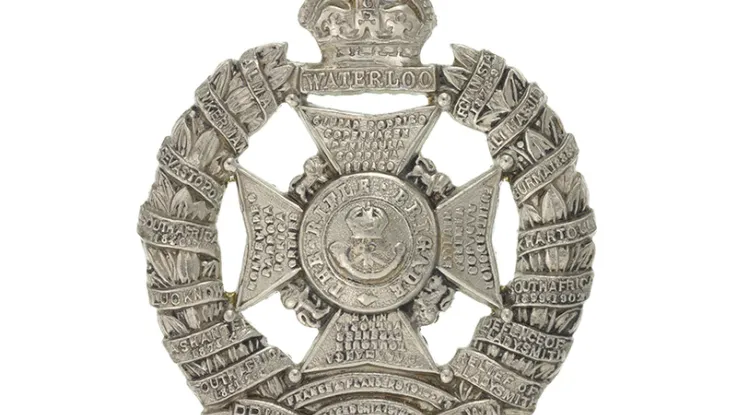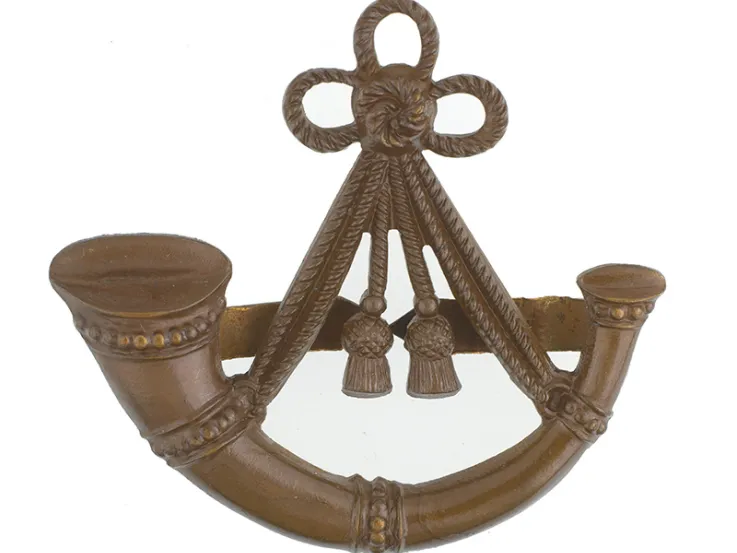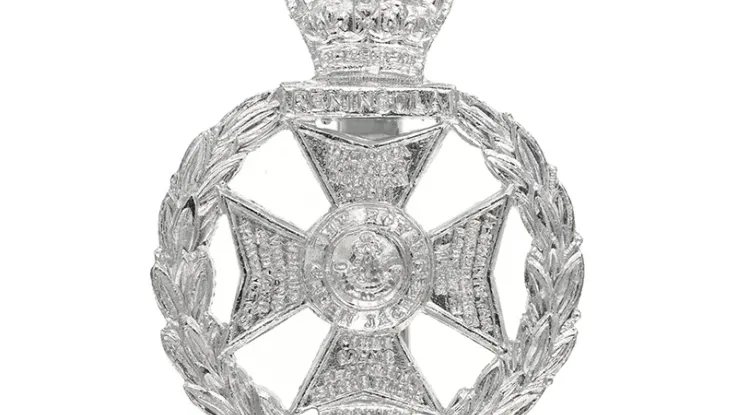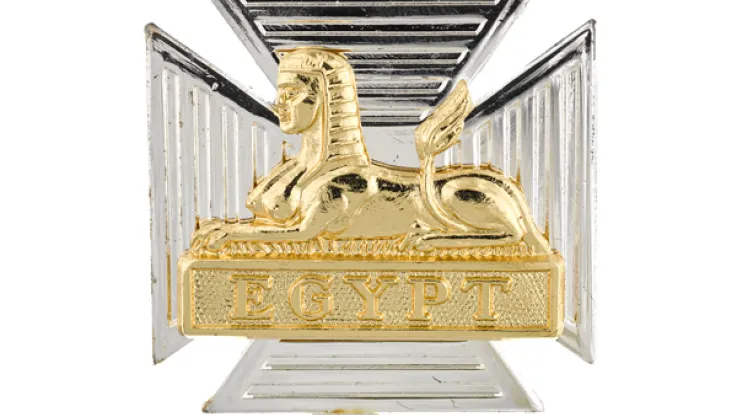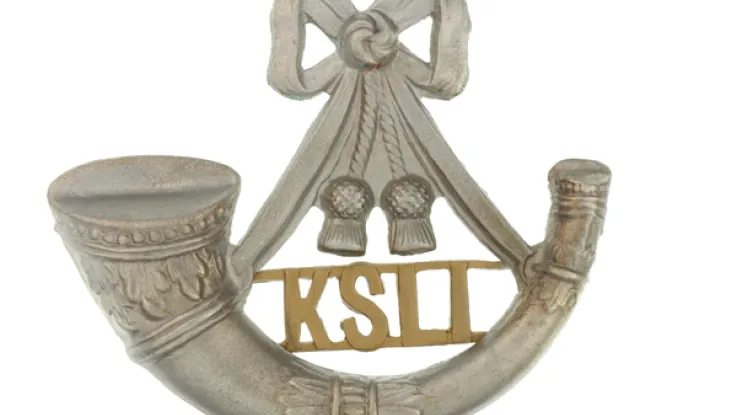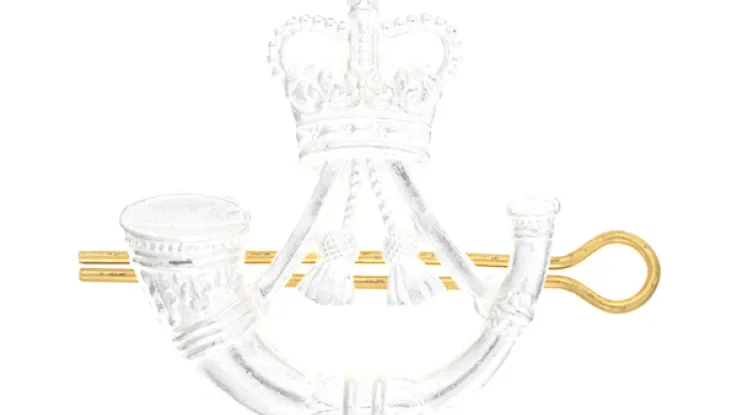Origins
In 1754, war broke out in North America over longstanding territorial disputes between British and French colonists. Both sides raised their own troops and were supported by military units from their parent nations and allies.
At first, the British struggled to adapt to the irregular style of fighting they encountered in the forests of the American frontier. By 1756, they had formed a new regiment to help address this, raised from Swiss and German settlers in the colonies of Maryland, Virginia and Pennsylvania. This four-battalion regiment also recruited men directly from Germany, as well as British volunteers from other regiments. Its soldiers could move quickly and were trained to use natural cover.
Initially given the numeral 62, it was renumbered as the 60th (Royal American) Regiment of Foot in 1757.
Early deployments
The regiment's earliest actions came against the French and their allies in the Seven Years War (1756-63). It was then involved in the fight against disaffected indigenous Americans during Pontiac’s Rebellion (1763-66).
Its 3rd and 4th Battalions were disbanded in the 1760s. However, they were re-formed for the duration of the American War of Independence (1775-83), and then again in 1787.
Both 1st and 2nd Battalion spent time in the West Indies over the next few decades.
Revolutionary and Napoleonic Wars
The regiment’s service in the West Indies continued during the wars against Revolutionary and Napoleonic France.
In 1796, most of 1st Battalion’s personnel transferred to 2nd Battalion. The following year, 1st Battalion re-formed in Guernsey, using Dutch and French Royalist troops.
The regiment raised a 5th Battalion in 1798. Its soldiers wore black leather helmets and green uniforms with scarlet facings, an early attempt at camouflage learned from experience of irregular warfare in North America.
This battalion was the very first unit in the British Army to be equipped with Baker rifles. Its soldiers used these to pick off the enemy with aimed shots. The battalion served throughout the Peninsular War (1808-14), fighting in most of the major engagements.
Structural changes
After Napoleon's final defeat at the Battle of Waterloo (1815), the regiment reverted to two battalions. The former 2nd and 3rd Battalions became the new 1st and 2nd Battalions respectively. Both became rifle units, 2nd Battalion in 1818 and 1st Battalion in 1824, inheriting fur busbies and green uniforms from the disbanded 5th Battalion.
In 1824, the regiment was renamed the 60th (The Duke of York’s Own Rifle Corps) after King George IV's younger brother, Frederick.
Six years later, when another of George's brothers acceded to the throne, as William IV, the regiment was renamed again, becoming the 60th (The King's Royal Rifle Corps). It would eventually drop the numeral from its title in 1881.
Victorian era
In the 1850s, it raised new 3rd and 4th Battalions. The 1st, 2nd and 3rd Battalions all fought during the Indian Mutiny (1857-59).
The regiment’s North American connections were renewed in the 1860s, when 4th Battalion was sent to reinforce the Canadian frontier at a time of high tension during the American Civil War (1861-65).
1st Battalion moved to Canada in 1867 and remained there for nine years, which included service during the Red River expedition (1870). In 1890, it was back in India, a posting which lasted six years and took in the Chitral expedition (1895) on the North-West Frontier.
In 1860, 2nd Battalion moved to China for a year. It returned to India in 1867, this time for 14 years, including service during the Second Afghan War (1878-80).
3rd Battalion remained in India, also spending time in Burma and Aden (now in Yemen), until 1872. It then served in South Africa, Egypt and the Sudan during the late 1870s and 1880s.
4th Battalion arrived in India in 1876, spending the next 16 years there and in Burma. In 1895, 3rd and 4th Battalions sent detachments to the Fourth Ashanti War in West Africa.
1st, 2nd and 3rd Battalions all served in South Africa during the Boer War (1899-1900). 3rd Battalion fought at Colenso in 1899, where Lieutenant Frederick Roberts - the son of Field Marshal Frederick Roberts - earned himself the first posthumous Victoria Cross.
Further reforms
The King’s Royal Rifle Corps (KRRC) was not assigned to a specific county during the 1881 army reforms. Instead, it took on several militia and volunteer units, especially from Huntingdonshire, Middlesex and Ireland.
In 1908, it was disaffiliated from most of its militia units. That same year, nine of its volunteer battalions were transferred into the London Regiment. These were re-affiliated to it in 1916, while remaining part of the London Regiment.
First World War
As a rifle unit, the KRRC did not carry colours, so its battle honours were instead inscribed on its badge. By 1914, it had 40 battle honours, more than any other British Army regiment.
On the outbreak of the First World War (1914-18), 1st and 2nd Battalions deployed directly to the Western Front, remaining there throughout the conflict.
Meanwhile, 3rd and 4th Battalions arrived on the Western Front in December 1914. Eleven months later, they were both sent to the Macedonian front. 4th Battalion was recalled to the Western Front in July 1918, but 3rd Battalion remained in Macedonia until the end of the war.
The regiment also raised 18 New Army battalions, but no further Territorial battalions, during the conflict.
Inter-war years
In 1922, 3rd and 4th Battalions were again disbanded. That same year, 2nd Battalion joined the Army of Occupation in Germany. It also deployed to Palestine in 1936, but otherwise spent the inter-war period in England and Northern Ireland.
In 1937, 2nd Battalion became a motorised unit. The following year, it was joined in Palestine by 1st Battalion, which had spent the previous 16 years in India and Burma.
Second World War
On the outbreak of the Second World War (1939-45), 2nd Battalion again deployed straight to France. It was captured at Dunkirk in May 1940. Six months later, a new 2nd Battalion was formed in Britain. This unit went on to serve in North Africa and Italy.
Meanwhile, 1st Battalion was motorised in 1940. It fought in the Middle East, before moving on to Italy in 1943.
In June 1944, 2nd Battalion landed in Normandy and later took part in Operation Market Garden. The regiment as a whole gained 41 battle honours during the conflict.
Post-war deployments
At the end of the war, 1st Battalion carried out occupation duties in Austria and Germany and 2nd Battalion deployed to Palestine. Both regular battalions converted back to infantry.
In 1948, it became a single-battalion regiment within the new Green Jackets Brigade. This formation also included the Oxfordshire and Buckinghamshire Light Infantry and the Rifle Brigade (Prince Consort's Own).
The regiment left Germany for Libya in 1955. Three years later, it moved to Northern Ireland. Over the next eight years, it spent time in West Germany, Britain and the Far East.
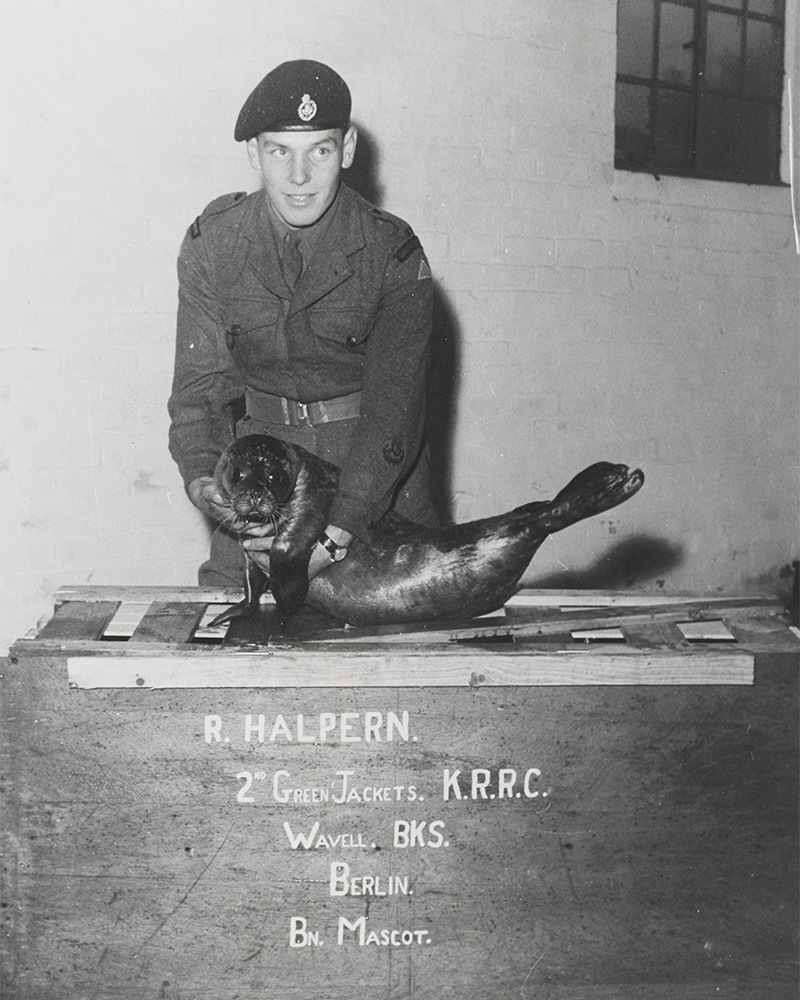
Rifleman Halpern, 2nd Green Jackets, The King’s Royal Rifle Corps, with the battalion mascot, a pet seal, Berlin, c1960
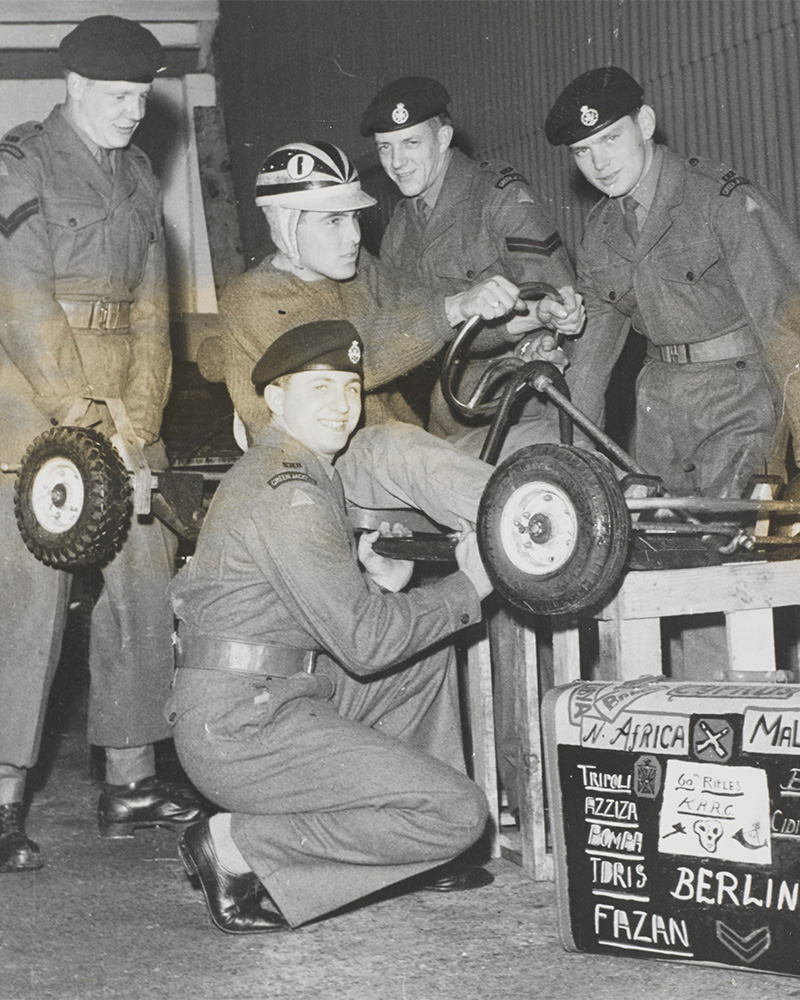
Soldiers of the 2nd Green Jackets, The King’s Royal Rifle Corps loading go-karts for a competition in Berlin, c1960
Legacy
In 1966, the three regiments of the Green Jackets Brigade were amalgamated to form The Royal Green Jackets. The King’s Royal Rifle Corps (which had been renamed the 2nd Green Jackets in 1958) became the new unit’s 2nd Battalion.
Regimental museums
The National Army Museum works with a network of Regimental and Corps Museums across the UK to help preserve and share the history and traditions of the Army and its soldiers.
Discover more about The King’s Royal Rifle Corps by visiting The Rifleman's Museum in Winchester.

